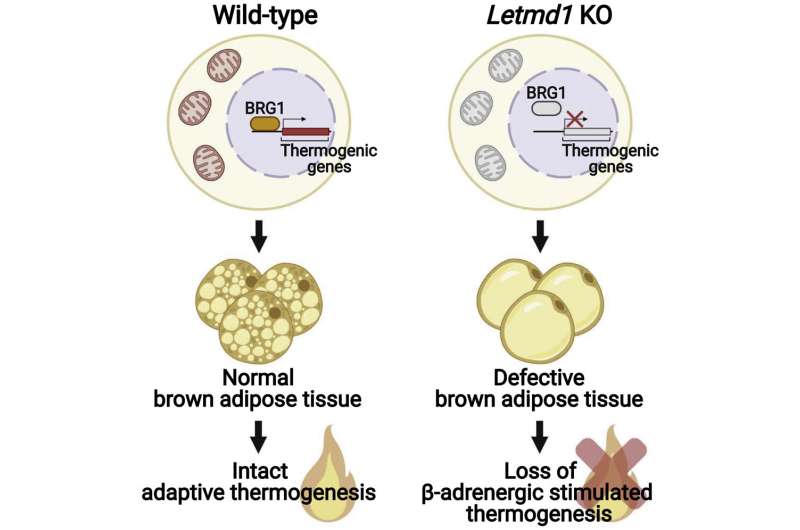This article has been reviewed according to Science X's editorial process and policies. Editors have highlighted the following attributes while ensuring the content's credibility:
fact-checked
peer-reviewed publication
trusted source
proofread
Can brown fat cells combat obesity?

UC Davis Health endocrinology researchers are investigating the role of two newly identified molecules that control heat production from fat tissues. Their hope is to discover a better way to combat obesity complications.
Assistant Professor of Endocrinology John C. Yoon and his team will study heat-producing fat tissues in the context of metabolic regulation and human disease.
"Many mammals, including humans, have multiple types of fat cells—some of which have evolved to turn fuel into heat and can actually burn calories," Yoon explained. "Both LETMD1 and NNAT are associated with regulating heat production from these fat cells. By better understanding how these molecules work, we might generate new therapies for obesity and diabetes."
Different types of fat cells
There are different types of fat in the human body.
White fat, also called white adipose tissue, makes up the majority of fat in adult bodies. These cells take up sugar (glucose) and fat molecules from the blood to form large lipid (or fat) droplets. (Think of this type of fat used as storage space for the excess calories we consume.)
Brown fat breaks down blood sugar (glucose) and fat molecules to create heat and help maintain body temperature. When the body gets cold, brown fat produces heat which can keep the body warm without the need to shiver.
Recently, researchers found a third type of fat cells, called beige fat cells. These cells act like brown fat cells but are found in similar areas as white fat cells.
Beige fat cells are created from white fat in a process called "browning." This process is triggered by exposure to low temperatures. Other stimuli such as exercise are also believed to encourage the browning process.
"Studies have shown people with high amounts of brown or beige fat tend to be leaner and have a reduced risk of diseases associated with obesity, including diabetes and heart disease," said Yoon. "The therapeutic potential of both kinds of brown fat cells is clear—but first, we need to learn how it is controlled and how it burns calories."
LETMD1 and NNAT's role in regulating heat production
During a 2021 study in Cell Reports that utilized mice, Yoon and his team analyzed the molecules of brown fat cells in animals when placed in cold temperatures. The team identified the endoplasmic reticulum (ER) membrane protein NNAT as a negative regulator of heat production and LETMD1 as a positive regulator of heat production in brown fat cells.
"This discovery was very exciting because it meant these molecules could play a key role in controlling when brown fat cells burn calories and break down blood sugar," Yoon said.
For their new study, Yoon and his team will characterize the regulation of systemic energy metabolism by LETMD1 and NNAT. They'll investigate the mechanisms of LETMD1 and NNAT action and examine how these molecules may impact thermogenesis, the body's process of heat production.
"We hope this study will help us understand how to pharmacologically manipulate brown fat to combat obesity," explained Yoon. "While most anti-obesity drugs in the market work by suppressing appetite, this would allow us to utilize an alternative therapy that increases energy use by stimulating thermogenesis."
More information: Kyung-Mi Choi et al, Defective brown adipose tissue thermogenesis and impaired glucose metabolism in mice lacking Letmd1, Cell Reports (2021). DOI: 10.1016/j.celrep.2021.110104




















